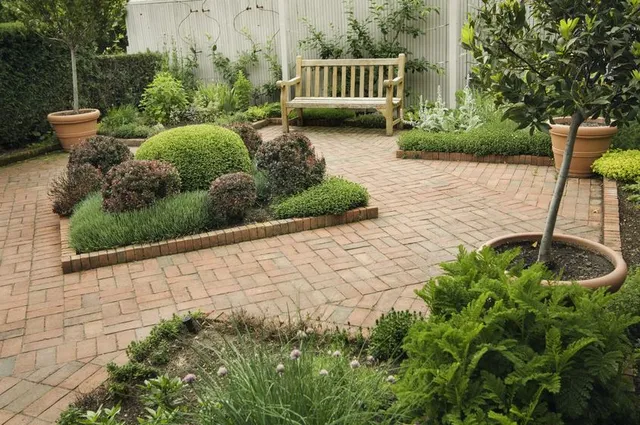Gardening has long been a cherished pastime, providing not only aesthetic beauty but also a deep connection to nature. Over the past few decades, however, gardening has evolved significantly. While many gardeners still cherish the timeless classics—roses, tulips, and daisies—there’s a growing interest in plants that offer more than just a pleasing visual display. New trends in plant selection are shifting the focus toward sustainability, adaptability, and function. In particular, the integration of unique plants that are not only beautiful but also resilient, eco-friendly, and multifunctional is transforming the way we approach gardening and outdoor spaces. This article will explore some of the most exciting plant trends that are shaping the future of gardens, from native species to edible gardens, and everything in between.
1. The Rise of Native Plants
One of the most significant shifts in gardening today is the emphasis on native plants. Native plants are those species that have naturally occurred in a particular region for centuries, and they offer numerous benefits to both gardeners and the environment. These plants are highly adapted to local soil conditions, weather patterns, and pests, making them more resilient and easier to maintain than non-native species.
Native plants are not only low-maintenance but also support local wildlife. Birds, insects, and other pollinators often rely on native species for food, shelter, and breeding grounds. As climate change and habitat destruction continue to threaten biodiversity, incorporating native plants into gardens has become an important part of creating sustainable ecosystems. Moreover, many native plants are drought-resistant, reducing the need for excess water—a crucial consideration in regions facing water scarcity.
Some popular native plants include coneflowers, black-eyed Susans, and bee balm, which are not only striking in appearance but also attract pollinators like bees and butterflies. These plants can create a stunning garden while contributing positively to the environment.
2. Edible Gardens: Growing Your Own Food
The trend of edible gardening has been growing steadily over the years, but it has gained even more momentum recently, especially with the global shift towards self-sufficiency and sustainability. As people become more conscious of where their food comes from and the environmental impact of industrial farming, growing edible plants in backyards, balconies, and even on rooftops has become a popular choice.
Edible plants like herbs, vegetables, and fruits are making their way into more and more gardens, offering both practical and aesthetic benefits. Not only do these plants provide fresh, organic food, but they can also be incredibly decorative. For example, heirloom tomatoes, with their vibrant colors and unusual shapes, add a visual appeal to any garden, while edible flowers like nasturtiums and pansies provide pops of color and a deliciously unique addition to meals.
Urban dwellers, in particular, are embracing the trend of container gardening with a focus on edibles. Tomatoes, peppers, lettuce, and even dwarf fruit trees are now common sights on balconies, patios, and rooftops. With the right care and conditions, it’s possible to grow a full harvest of vegetables in small spaces, all while contributing to a more sustainable lifestyle.
3. Succulents and Cacti: The Low-Maintenance Darlings
For those who live in dry, arid climates or who simply seek plants that require minimal care, succulents and cacti have become a go-to choice. These hardy plants are well-suited to a variety of climates, including the increasingly common hot, dry conditions brought about by climate change. Succulents and cacti are known for their ability to store water in their leaves, making them exceptionally drought-resistant and ideal for xeriscaping—a landscaping technique that minimizes water use.
Succulents, with their fleshy, water-storing leaves, come in a vast array of shapes, colors, and textures, making them perfect for both indoor and outdoor gardens. Their architectural forms and muted, pastel hues can be combined to create beautiful and low-maintenance arrangements. Cacti, too, come in a surprising range of sizes and shapes, from tiny globular species to tall, majestic varieties like the saguaro.
Beyond their aesthetic appeal, succulents and cacti can be used in creative outdoor spaces such as desert-themed gardens or vertical succulent walls. Their minimal care requirements, paired with their unique visual appeal, make them a staple in modern gardening trends.
4. Pollinator-Friendly Plants: Supporting the Ecosystem
The importance of pollinators in our ecosystems cannot be overstated, and gardeners are increasingly turning to plants that support bees, butterflies, hummingbirds, and other pollinating creatures. Pollinator-friendly plants have become a focal point for those wishing to contribute to the preservation of these vital species, which are essential for the reproduction of many flowering plants and food crops.
Flowering plants such as lavender, sunflowers, and zinnias are popular choices for attracting pollinators, thanks to their vibrant colors and rich nectar. Similarly, plants like milkweed, which is the sole food source for monarch butterfly larvae, are becoming increasingly sought after by eco-conscious gardeners. By choosing plants that specifically benefit pollinators, gardeners can create a vibrant, biodiverse outdoor space while helping to combat the ongoing decline in pollinator populations.
In addition to planting the right species, many gardeners are also incorporating pollinator habitats into their outdoor spaces, such as bee hotels, butterfly houses, and even native wildflower meadows. These efforts not only support pollinator populations but also add an element of charm and ecological value to gardens.
5. Tropical Plants for Urban Gardens
Another emerging trend in urban gardening is the incorporation of tropical plants. These exotic plants, with their bold, dramatic foliage and vibrant blooms, are finding their place in both indoor and outdoor urban gardens. While tropical plants are traditionally associated with lush, humid climates, many varieties are now available that are well-suited to container gardening and can thrive in the more temperate conditions of urban environments.
Tropical plants such as banana plants, bird of paradise, and hibiscus bring a sense of tropical flair to city gardens. Their large, glossy leaves and striking flowers add a sense of escapism, transforming even the most mundane cityscape into a mini oasis. Some varieties, like the hardy canna lily or the palm-like sago palm, can even withstand cooler temperatures, making them suitable for a broader range of climates.
The appeal of tropical plants is not just in their bold beauty but also in their ability to create a sense of tranquility and a connection to nature, offering a little piece of paradise amid the concrete jungle.
6. The Return of Flowering Vines
Flowering vines are making a dramatic comeback, with gardeners embracing their beauty and versatility. Vines such as clematis, wisteria, and trumpet vine are being used to add vertical interest to gardens, draping over fences, trellises, and pergolas. Their cascading flowers can create a breathtaking focal point, adding both color and texture to outdoor spaces.
Climbing plants also offer privacy and shade, making them an ideal choice for urban gardens where space is limited. They can be trained to cover walls, providing a natural and aesthetic way to add green coverage and insulation to homes and outdoor spaces. With their rapid growth and vibrant blooms, flowering vines are perfect for gardeners looking to quickly transform their spaces into lush, green retreats.
Conclusion
The new trends in plants that are shaping the future of gardening are as diverse as they are exciting. From native plants that promote environmental sustainability to edible gardens that offer both beauty and function, today’s gardeners are embracing plants that provide more than just visual appeal. The rise of succulents and cacti for low-maintenance spaces, the focus on pollinator-friendly species, and the growing popularity of tropical plants all demonstrate that gardening is no longer just about flowers—it’s about creating sustainable, vibrant, and functional outdoor spaces that reflect a deeper connection to nature. As gardening continues to evolve, these trends are helping gardeners adapt to changing environmental conditions while still enjoying the beauty and serenity of their outdoor spaces. Whether you are a seasoned gardener or a newcomer, these plant trends offer endless possibilities for transforming your garden into a thriving, eco-friendly haven.

